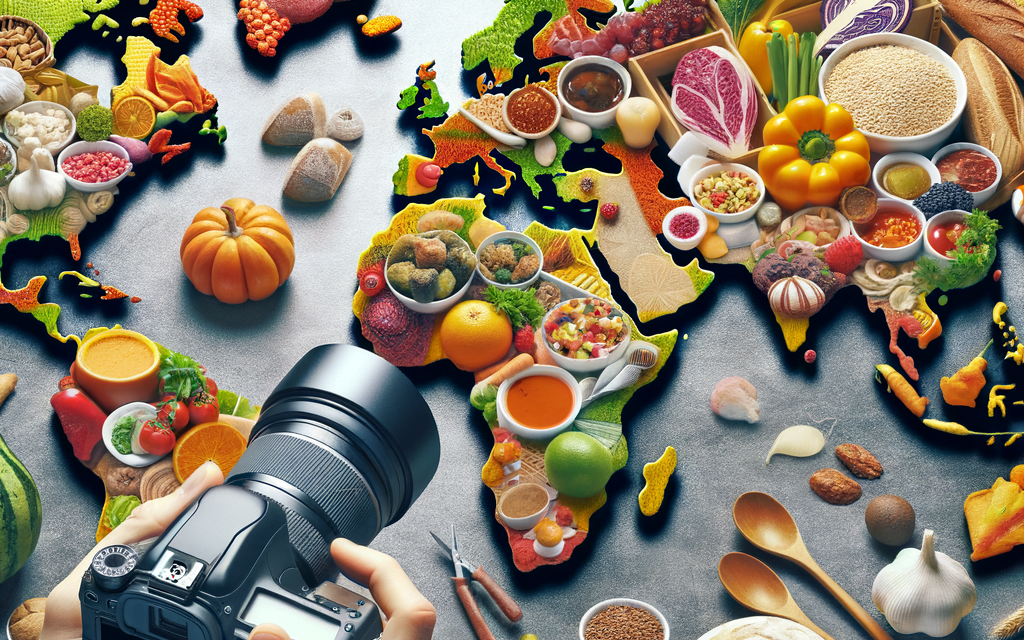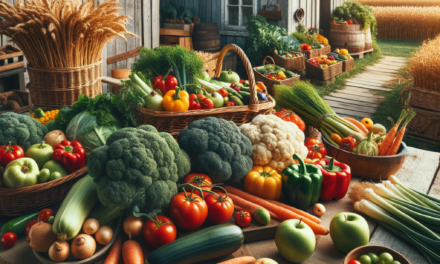Embarking on a Global Culinary Journey for Health and Wellness
When it comes to healthy eating and nutrition, there’s no one-size-fits-all approach. As we explore the diverse tapestry of cultural diets around the world, we uncover a wealth of knowledge that can inspire our own food choices and enrich our wellness journey. From the Mediterranean shores to the bustling streets of Tokyo, let’s delve into the eating habits that keep various cultures thriving and how we can incorporate these practices into our own lives.
The Mediterranean Diet: A Heart-Healthy Staple
The Mediterranean diet is renowned for its heart-healthy benefits and is often associated with longevity. Characterized by:
- High consumption of fruits, vegetables, whole grains, and legumes
- Healthy fats such as olive oil
- Moderate intake of fish and poultry
- Low consumption of red meat and dairy products
Practical Tip: Start by incorporating more plant-based meals into your diet and using olive oil as your primary cooking fat. This small change can make a big difference in your health.
The Japanese Diet: Minimalism and Balance
In Japan, the diet is as much about the way of eating as it is about the food itself. The Japanese diet emphasizes:
- Portion control and mindful eating
- A diverse range of seasonal, fresh foods
- Seafood as a primary protein source
- Minimal use of added sugars and fats
Personal Anecdote: During a trip to Japan, I was struck by the simplicity and elegance of their meals. Small portions, beautifully presented, encouraged me to savor each bite and truly appreciate the flavors.
The Nordic Diet: Sustainable and Wholesome
The Nordic diet, which hails from countries like Denmark, Finland, and Sweden, focuses on sustainability and whole foods. It includes:
- High-quality, locally sourced meat and fish
- A variety of whole grains such as rye, barley, and oats
- Plenty of berries, root vegetables, and legumes
- Low-fat dairy products
Actionable Advice: Try incorporating more seasonal and local produce into your meals. Not only is this better for the environment, but it also ensures you’re getting the freshest and most nutrient-dense ingredients.
The Indian Vegetarian Diet: Flavorful and Nutrient-Rich
Many regions in India follow a predominantly vegetarian diet that is both flavorful and nutritious. Key components include:
- A variety of lentils and beans
- Whole grains like rice and wheat
- An abundance of spices, which add flavor without extra calories
- A focus on fresh fruits and vegetables
To dive into the rich flavors of Indian cuisine, consider exploring Dishoom: The first ever cookbook from the much-loved Indian restaurant, priced at £20.80, which offers a treasure trove of recipes and stories from the famous eatery.
Latest Research: Studies have shown that a well-planned vegetarian diet can reduce the risk of chronic diseases and promote a healthy weight.
Bringing It All Together: Your Global Kitchen
Embracing elements from these cultural diets can lead to a more balanced and healthful eating pattern. Here are some steps to get started:
- Experiment with new recipes from different cultures once a week. For quick and healthy meals, Joe’s 30 Minute Meals: 100 Quick and Healthy Recipes at £12.98 can be a great resource.
- Incorporate a ‘Meatless Monday’ into your week using Indian vegetarian dishes as inspiration, with Fresh India: 130 Quick, Easy and Delicious Vegetarian Recipes for Every Day at £16.70 guiding your culinary creations.
- Make vegetables the star of your plate, taking a cue from the Mediterranean and Nordic diets. Jamie Oliver’s 5 Ingredients – Quick & Easy Food at £15.00 offers straightforward recipes that align with this philosophy.
- Practice mindful eating, inspired by the Japanese approach to savor and enjoy your food.
By drawing on the rich culinary traditions of the world, we can create a varied and nutritious diet that benefits our health and satisfies our taste buds. Remember, healthy eating isn’t about strict limitations; it’s about finding joy and balance in the foods that nourish our bodies and our souls.
For those looking to understand the connection between diet and gut health, Eat Yourself Healthy: An easy-to-digest guide to health and happiness from the inside out at £12.80, offers valuable insights into how the foods we eat can influence our overall well-being.
Conclusion: Key Takeaways for a Healthier You
- Explore a variety of cultural diets to find what works best for you.
- Adopt a more plant-centric approach to eating, regardless of the specific diet you follow.
- Be mindful of portion sizes and listen to your body’s hunger cues.
- Enjoy the process of discovering new flavors and ingredients.
As we continue to navigate the changing seasons of life, let’s take inspiration from the global community and make every meal an opportunity for health, happiness, and cultural exploration.










